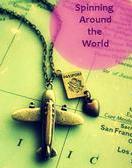El estilo balcánico
El año 2014 marcará el final de la controvertida renovación de Skopje, la capital macedonia, que poco a poco se ha ido convirtiendo en un destino más amable para el visitante, con una amalgama de flamantes albergues modernos, bares de vinos y bistrós de categoría, además de una de las mejores ofertas de clubes en Europa meridional. Más allá de Skopje y otros centros turísticos más establecidos, como el lago Ohrid, la estación de esquí de Mavrovo y la antigua Stobi, están surgiendo nuevas propuestas en otros puntos del país. La serena Berovo, en la frontera con Bulgaria, es una nueva opción en el catálogo de los hoteles spa. En la idílica mitad oriental de Macedonia, la recia y vetusta Kratovo –con puentes de piedra de la época otomana y callejas empedradas– está renovando mansiones turcas hasta hace poco abandonadas, dando fe de la otrora riqueza de esta vieja población minera. Y en la árida región vitícola de Tikveš, flamantes bodegas de categoría atraen a visitantes sedientos de vino.
The Balkan style
The year 2014 will mark the end of Skopje’s controversial renovation, the Macedonian capital, which little by little has been turning into a better destination for the visitor, with an amalgam of flaming modern lodgings, bars of wines and bistros of category, besides one of the best offers of clubs into southern Europe. Beyond Skopje and other more established tourist centers, as the lake Ohrid, the ski resort of Mavrovo and the former Stobi, are arising new offers in other points of the country.
The serenade Berovo, in the border with Bulgaria, is a new option in the catalogue of the hotels spa. In the idyllic oriental half of Macedonia, the stout and very old Kratovo – with bridges of stone of the Ottoman epoch and paved alleys. And in Tikves’s arid wine-growing region, flaming warehouses of category attract visitors thirsty for wine.
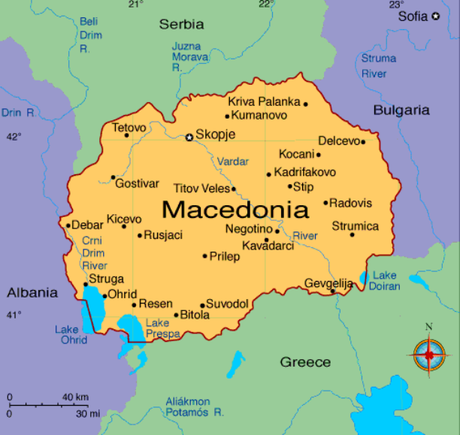
La Antigua República Yugoeslava
La ex República yugoslava de Macedonia se encuentra en la Península Báltica, en el sudeste de Europa y comparte fronteras con Serbia al norte, Bulgaria al este, Grecia al sur y Albania al oeste. Es denominada así internacionalmente, pues Grecia se disputa el mismo nombre para una región, que nada tiene que ver y con la que no hay que confundir, ya que su origen étnico los vincula a los búlgaros, su lengua es eslava y usan el alfabeto cirílico.
Macedonia cuenta con tres grandes lagos (Ohrid, Prespa y Doiran) que comparten, por situarse allí las fronteras, con Albania y Grecia. El país está situado entre los montes Sharr y los Osogovske por que es en su mayoría un país montañoso (el pico más alto está a 2.800 m), aunque se alterna con una gran llanura en forma de meseta que en su parte más alta mide 900 m. El país está atravesado por el río Vardar. Es una zona activa sísmicamente. El último terremoto se produjo en el año 1963 en Skopje, la capital y la ciudad más poblada de Macedonia.
La Antigua República yugoeslava de Macedonia obtuvo su independencia por primera vez en su historia en el año 1992, independizándose de Yugoslavia sin derramamiento de sangre.
The Ex Yugoslavian Republic
The Yugoslavian Ex-Republic of Macedonia is in the Baltic Peninsula, in Europa’s southeast and shares borders with Serbia in the northern part, Bulgaria in the eastern part, Greece in the southern part and Albania in the western part. It is named this way internationally, his ethnic origin links the Bulgarians, his language is Slavonic and they use the Cyrillic alphabet.
Macedonia possesses three big lakes (Ohrid, Prespa and Doiran) that they share, for the borders placing there, with Albania and Greece. The country is placed between the mounts Sharr and the Osogovske for which it is in the main a mountainous country (the highest beak is to 2.800 m), though one alternates with a great plain in the shape of plateau that in his higher part measures 900 m. The country is crossed by the river Vardar. It is a zone activates seismically. The last earthquake took place in the year 1963 in Skopje, the capital and the city most filled in Macedonia.
The Ex Yugoslavian Republic of Macedonia obtained his independence for the first time in his history in the year 1992, becoming free of Yugoslavia without spilling blood.
Mezcla de culturas
Macedonia es una mezcla de muchas culturas pero sobre todo la turca y la ortodoxa. Esto se refleja sobre todo en su arquitectura, en la música y en general en el arte macedonio y por supuesto en su gastronomía. El plato preferido de los macedonios es el burek, empanada de carne o queso pero también es muy popular el grayce na tayce una especie de potaje de judias y en la zona de los lagos se come mucha trucha. El yogurt es especialmente bueno en Macedonia.
Las comunicaciones no son muy buenas en Macedonia. El tren solo une Skopje con Atenas y Belgrado. El resto de los destinos tienen que hacerse por autobús, con una red buena pero malas carreteras (el país sólo cuenta con 133 Km de autovía y hay que adquirir cupones de gasolina).
En cuanto a la seguridad, Macedonia es un país tranquilo, no hay grandes problemas de seguridad ciudadana y la gente suele ser amable.
Mixture of cultures
Macedonia is a mixture of many cultures but especially Turkish and the Orthodox one. This is reflected especially in his architecture, in the music and in general in the Macedonian art and certainly in his gastronomy. The favorite plate of the Macedonians is the ¨burek¨, pie of meat or cheese but also the ¨grayce na tayce¨ is very popular it is like a pottage of beans and in the zone of the lakes one eats many trout. The yogurt is specially good at Macedonia.
The transports are not very good at Macedonia. The train only joins Skopje with Athens and Belgrade. The rest of the destinations have to be done by bus, with a good network but bad roads (the country only possesses 133 Km from highway and it is necessary to acquire coupons of petrol). As for the safety, Macedonia is a calm country, there are no big problems of civil safety and the people are very nice.
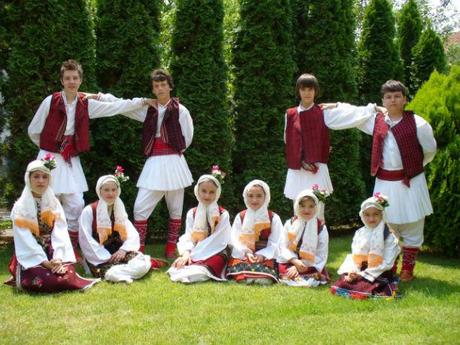
Traje típico habitantes de Skopje
Clima y cuando ir
Las temperaturas varían extensamente: en verano pueden alcanzar 40°C, mientras en el invierno las temperaturas pueden bajar hasta los -30°C. Las temperaturas medias anuales alcanzan los 10°C en todo el país. Los veranos son calientes y secos, mientras en el invierno la nieve cae en las montañas de noviembre a abril. El mejor momento de disfrutar de Macedonia es entre mayo y septiembre, y la temporada alta de turismo es de mediados de julio a mediados de agosto, cuando los macedonios toman sus vacaciones.
Climate & when to go
Temperatures vary widely: summer temperatures can reach 40°C, while in winter it can drop as low as minus 30°C. The average annual temperatures are above 10°C almost everywhere. Summers are hot and dry, while in winter the snow falls in the mountains from November to April.
The best time to enjoy Macedonia is between May and September, and the peak tourist season is from mid-July to mid-August, when locals take their holidays.
Información práctica/Practical information
Religión: 67% ortodoxos orientales y 30% musulmanes.
Religion: 67% orthodox oriental and 30% Moslem.
Moneda: Dinar macedonio (MKD). No cotiza en lo mercados financieros y fluctúa mucho por la inflación.
Son más apreciados los euros y los dólares. Las tarjetas de crédito y el sistema bancario están poco desarrollados, por lo que se recomienda llevar dinero efectivo.
Currency: Macedonian Dinar (MKD). It does not quote in financial markets and fluctuates very much for the inflation. The euros and the dollars are more valued. The credit cards and the bank system are little developed, by what cash is recommended to take.
Sanidad: Se recomienda contratar seguro médico. Las condiciones del sistema sanitario no son muy buenas por lo que, lo más aconsejable en tratamientos de importancia es el traslado a Grecia o España. Sin embargo no son necesarias ningún tipo especial de vacunas.
Health: One recommends to contract medical insurance. The conditions of the sanitary system are not very good, the most advisable thing in treatments of importance is the movement to Greece or Spain. Nevertheless no special type of vaccines are necessary.
Visas: Ciudadanos de la UE, Argentina, Barbados, Bosnia, Botsuana Croacia, Cuba, Islandia, Israel, Japón, Nueva Zelanda, Maldivas, Noruega, Suiza y los EE.UU. no necesitan visados para Macedonia y se les permite quedarse hasta tres meses. El resto de países requieren visado y cuesta entre 20 euros a 50 euros dependiendo de donde se solicite y si es solo – o la entrada múltiple. Aunque algunos visados puedan ser obtenidos en el aeropuerto para algunas nacionalidades, es mucho más seguro pedirla por adelantado. Comprueba www.mfa.gov.mk para más información.
Visas: Citizens of EU countries, Argentina, Barbados, Bosnia, Botswana Croatia, Cuba, Iceland, Israel, Japan, New Zealand, Maldives, Norway, Switzerland and the USA don’t need visas for Macedonia and are allowed to stay for up to three months. Visas are required for most others and cost €20 to €50 depending on where you apply for it and whether it is single- or multiple-entry. Even though some visas can be obtained at the airport for some nationalities, it is much safer to apply in advance. The regulations change quite frequently – check www.mfa.gov.mk for the latest information.
Transporte:
Avión: Macedonia dispone de dos aeropuertos internacionales, Skopje´s Petrovec airport y uno mas pequeño llamado Ohrid airport. No hay que pagar impuestos de salida en estos aeropuertos.
Air: Macedonia has two international airports, Skopje´s Petrovec airport and one muche smaller Ohrid airport. There is not departure tax.
Tren: Macedonia tiene una red limitada de destinos domésticos accesibles en tren. Posiblemente el único tren que más se utiliza es el de cuatro horas, con tres salidas diarias hacia Bitola vía Prilep desde Skopje. El boleto doméstico cuesta 370MKD de vuelta a Bitola. Los horarios están disponible en el sitio web de Ferrocarriles macedonios (www.mz.com.mk/patnichki/timetable.htm).
Train: Macedonia has a limited network of domestic destinations reachable by train. Possibly the only one of any real interest is the four-hour, three-times-daily service to Bitola via Prilep from Skopje. The most you’ll pay for a domestic ticket is 370MKD for a return to Bitola. Timetables are available on the website of Macedonian Railways(www.mz.com.mk/patnichki/timetable.htm).
Autobús: Hay autobuses desde Skopje que viajan a Belgrado (precio 1350MKD, seis horas, 431km, 16 salidas diarias), Prishtina (300MKD, 1 horas ¾, 87km, seis diarias), Sofía (640MKD, seis horas, 222km, seis diarias) y destinos internacionales como Sarajevo, Zagreb y Ljubljana. Muchas de estas rutas pasan por ciudades más pequeñas, incluyendo Ohrid y Bitola. A Albania se puede viajar de Tetovo vía Struga a Tirana en autobús (900MKD, seis a siete horas, dos diariamente el lunes, el miércoles y el viernes). De Ohrid se puede coger un autobús Sveti Naum a la frontera (80MKD, 50 minutos, 29km, cuatro diario) y cruzarse a pie.
Bus: From Skopje buses travel to Belgrade (1350MKD, six hours, 431km, 16 daily), Prishtina (300MKD, 1¾ hours, 87km, six daily), Sofia (640MKD, six hours, 222km, six daily) and further-flung Eastern European centres such as Sarajevo, Zagreb and Ljubljana. Many of these routes pass through smaller centres, including Ohrid and Bitola.
To/from Albania you can travel from Tetovo via Struga to Tirana by bus (900MKD, six to seven hours, two daily on Monday, Wednesday and Friday). From Ohrid you can catch a Sveti Naum bus to the border (80MKD, 50 minutes, 29km, four daily) and cross on foot.
Taxi: Los taxis son un modo rápido de llevarte a monasterios apartados y otros monumentos si los autobuses no son convenientes. Taxis macedonios son muy baratos comparados con las tarifas europeas – Skopje es una del las capitales con los taxis más baratos. Un viaje de media hora, de Skopje al Lago Matka por ejemplo, debería costar alrededor 350MKD.
Taxi: Taxis are a snappy way of getting to out-of-the-way monasteries and other sights if buses aren’t convenient. Macedonian taxis are very cheap by European standards – Skopje has some of the cheapest capital-city taxis. A half-hour trip, from Skopje to Lake Matka for example, should cost around 350MKD.
Lugares para visitor/Places to visit
1. SKOPJE
Skopje es fiel reflejo de la mezcla de culturas reinante en Macedonia. Se encuentra situada a la orilla del río Vardar. Su arquitectura es una mezcla del estilo comunista con lo tradicional antiguo. Pasear por la ciudad es muy agradable y en ella podemos encontrar lugares de interés como es el Puente Turco de Piedra que comunica la Plaza Marsal Tito y los Baños Daud Pasha de 1466.
1. SKOPJE
Skopje is a faithful reflection of the reigning mixture of cultures in Macedonia. This city is located to the shore of the Vardar River. His architecture is a mixture of the communist style with the ancient traditional thing. To walk along the city is very agreeable and there we can find places of interest like the Turkish Bridge of Stone that communicates the Plaza Marsal Titus and the Daud Pasha Baths of 1466.
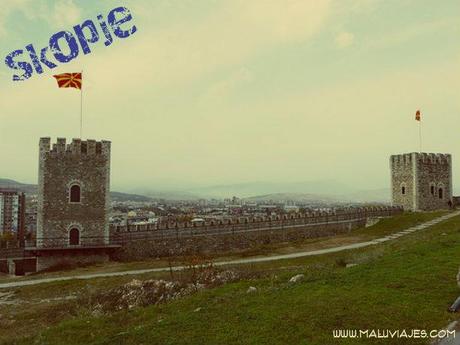
Fortaleza Kale
2. CARSIJA
Además del antiguo mercado en Carsija es recomendable visitar la Mezquita Mustafa Pasha de 1492, el Museo de Macedonia, la Colina del Castillo (en ruinas) con grandes vistas sobre la ciudad y el Mercado de Verdura. La influencia musulmana se ve sobre todo, cuando entramos en un café, de los muchos que existen en Carsija, y comprobamos que solo hay hombres.
2. CARSIJA
Besides the market in Carsija is advisable to visit the Mosque of Mustafa Pasha of 1492, the Museum of Macedonia, the Hill of the Castle (in ruins) with big views on the city and the Market of Vegetable. The Moslem influence is seen especially, when we enter a coffee shop, of many that exist in Carsija, and we realized that there are only men.

Mezquita de Mustafa Pasha
3. JAKUPICA
Jakupica además, de ofrecer edificios históricos dignos de ser visitados como el Monasterio de Santa Nikita (1307) en Skopska Grna Gora o el Monasterio de San Andrés en Matha, a 17 Km de Skopje, es la delicia de los que gustan caminar y disfrutar de la naturaleza, ya que cuenta con bellos lagos y bosque en una región de montaña.
3. JAKUPICA
Jakupica in addition, of offering historical buildings worth being visited as the Monastery of Holy Nikita (1307) in Skopska Grna Gora or San Andrés’s Monastery in Matha, to 17 Km from Skopje, is the delight of that they like to walk and to enjoy the nature, since it possesses beautiful lakes and forest in a region of mountain.
4. LAGO OHRID
Ohrid, rodeada de montañas, está situada a 700 m de altura y se encuentra a orillas del lago del mismo nombre (el más profundo de Europa y uno de los más antiguos del mundo) y que comparte con Albania. Cerca se encuentra la ciudad de Struga.
Es el destino turístico preferido de los macedonios, y no es de extrañar, ya que cuenta con un bellísimo entorno, además de atracciones culturales como son unas ruinas romanas y cristianas, una fortaleza medieval, iglesias ortodoxas y una ciudad amurallada. Ohrid también cuenta con una gran infraestructura turística.
Es agradable ir de compras por la galería peatonal de Syeti Kiliment Ohridski o sentarse a descansar en uno de sus cafés. En el extremo norte de la calle se encuentra un árbol que dicen tiene 900 años.
En Ohrid es obligado visitar: La casa de la familia Robevi, hoy Museo Nacional en la calle Car Samoil, también en esta calle se encuentra la iglesia Syeti Sofija del siglo XI.
La iglesia de San Clemente, construida sobre la antigua basílica. Visitar la muralla y sus puertas de entrada a la antigua Ohrid. Desde la fortaleza hay unas bellísimas vistas de la ciudad, el lago y la campiña que la rodea.
En Struga existe un mercado donde se venden tapices macedonios, calcetines hechos a mano de lana multicolor, joyas en filigrana y muchos productos más de artesanía local.
Saliendo de la ciudad hacia el sur, a 29 Km se encuentra la iglesia de Syeti Naum, sobre una colina. Si nos dirigimos hacia el lago Presga podremos visitar el Parque Nacional de Galitzia.
4. LAKE OHRID
Ohrid, surrounded by mountains, is placed to 700 m of height and it is located at the shore of the lake with the same name (the deepest of Europe and one of the most ancient of the world) and it shares with Albania. Nearby one finds Struga’s city. It is the tourist favorite destination of the Macedonians, and is not of surprising, since it possesses the most beautiful environment, besides cultural attractions since it are a few Roman and Christian ruins, a medieval stronghold, orthodox churches and a walled city. Ohrid also possesses a great tourist infrastructure.
It is agreeable go shopping for Syeti Kiliment’s pedestrian gallery Ohridski or to sit down to resting in one of his coffees. In the north end of the street one finds a tree that they say is 900 years old. In Ohrid it is forced to visit: The house of the family Robevi, today National Museum in the street Car Samoil, also in this street is the church Syeti Sofija of the 11th century. San Clemente’s church, constructed on the former basilica. Visit the wall and his doors of entry of old Ohrid. From the stronghold there are beautiful views of the city, the lake and the field that surrounds it.
In Struga a market exists where there are sold Macedonian tapestries, handmade socks of multicolored wool, jewels in filigrane and many products of local crafts. Going out of the city towards the south, to 29 Km one finds Syeti Naum’s church, on a hill. If we go towards the lake Presga we will be able to visit Galitzia’s National Park.

5. BITOLA
Con edificios elegantes y gente agradable, Bitola se encuentra a 660m, tiene una sofisticación heredada a partir de sus días otomanos, conocida como ¨la Ciudad de los Cónsules¨. Sus viviendas urbanas coloridas, del siglo XVII y XIX, mezquitas turcas y su cultura de cafés, hacen que esta ciudad sea intrigante y una de las mejores ciudades habitables en toda Macedonia. Una experiencia esencial es beber a sorbos un café y ver la mirada de la gente a lo largo del pedestrianised Sirok Sokak (‘ la Amplia Calle ‘ en turco – todavía llamaba ul Maršal Tito).
5. BITOLA
With elegant buildings and beautiful people, elevated Bitola (660m) has a sophistication inherited from its Ottoman days as the ‘City of Consuls’. Its 18th- and 19th-century colourful townhouses, Turkish mosques and cafe culture make it Macedonia’s most intriguing and liveable major town. An essential experience is sipping a coffee and people-watching along the pedestrianised Širok Sokak (‘Wide Street’ in Turkish – still called ul Maršal Tito officially).
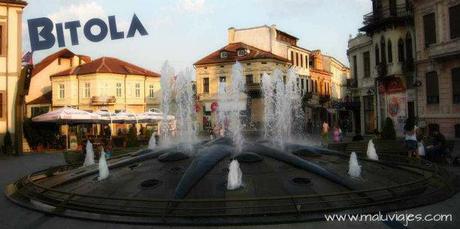
6. PARQUE NACIONAL PELISTER
Ubicado entre Bitola y Ohrid se encuentra el Parque Nacional Pelister de Macedonia, sepultado en un terreno montañoso y rústico y mirando a las brillantes aguas del lago Prespa. Realice una caminata a través de este parque rico en flora y fauna y, si tiene suerte, podrá ver osos, ciervos y lobos. Y por qué no pasar la noche en una choza en la montaña. Cerca de allí se encuentra otro parque importante, el Parque Nacional Galičica, ubicado discretamente entre los lagos Ohrid y Prespa. Disfrute una caminata por el parque para ver algunas de las escenas más pintorescas de Macedonia.
6. NATIONAL PARK PELISTER
Located between Bitola and Ohrid is the National Park Pelister of Macedonia, buried in a mountainous and rustic area and looking at the brilliant waters of the lake Prespa. A trek realizes across this rich park in flora and fauna and, if it is lucky, it will be able to see bears, deer and wolves. And why not to spend the night in a hut in the mountain. Near there you can find another important park, the National Park Galičica, located discreetly between the lakes Ohrid and Prespa. Enjoy a trek for the park to see some of the most picturesque scenes of Macedonia.
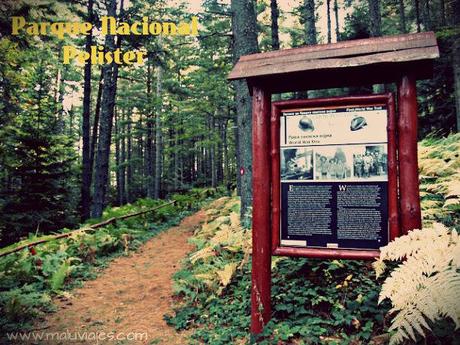
7. PARQUE NACIONAL MAVROVO
El Parque Nacional Mavrovo es uno de los espacios naturales más espléndidos de Macedonia, con cristalinas cascadas y lagos escondidos en un bosque de pinos y abedules. Puede hacer caminatas o acampar en los picos más altos de Macedonia durante prácticamente todo el año, mientras que los meses de invierno ofrecen suficiente nieve para convertir a Macedonia en uno de los lugares más económicos para la práctica del esquí y el snowboard. Pruebe visitar el centro de esquí Zare Lazarevski. El hermoso lago Ohrid, rodeado de montañas, es la pequeña gema macedonia. Es uno de los más antiguos y profundos de Europa y se puede practicar buceo en sus transparentes aguas.
7. NATIONAL PARK MAVROVO
Is one of the most splendid natural spaces of Macedonia, with crystalline waterfalls and lakes hidden in a forest of pines and birches. You can make treks or encamp in the highest beaks of Macedonia during practically all the year round, whereas the winter’s months they offer sufficient snow to turn Macedonia into one of the most economic places for the practice of the ski and the snowboard. Try to visit the Zare Lazarevski center of ski. The beautiful lake Ohrid surrounded with mountains, is the small Macedonian gem. It is one of the most ancient and deep of Europe and it is possible to practise skin-diving in his transparent waters.

Macedonia es un destino que este 2014 se pondrá de moda, gracias a la recuperación de un país que tiene muchos recursos turísticos para ofrecer al visitante. Poco se conoce de este país, pero tiene una mezcla de culturas cómo la turca y la ortodoxa con lugares preciosos para hacer disfrutar al visitante.
Ciudades especializadas en el turismo de salud con modernos spas es otra oferta turística irresistible para el viajero. No te pierdas, un viaje lleno de historia y cultura. Macedonia os espera!!!!
Macedonia is a top destination for this 2014, thanks to the recovery of a country that has many tourist resources to offer the visitor. In general we dont know much about this country, but it has a mixture of cultures like the Turkish one and the orthodox with beautiful places for the visitor. Cities specialized in the tourism of health with modern spas it is another tourist irresistible offer for the traveler. Don´t miss, a trip full of history and culture. Macedonia waits for you!!!!

